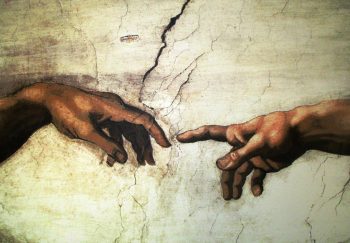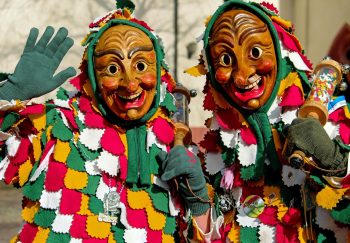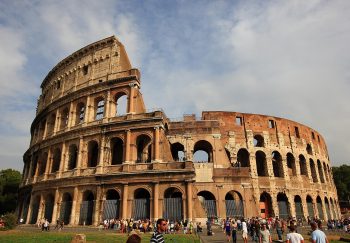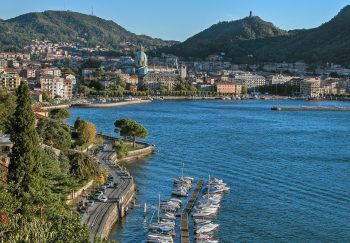You want to see Paris’s most terrifying attraction?
Paris was a slum by the middle of 18th century. Although it was one of the most wealthy and populated cities in the West, its rapid growth caused the city’s cemeteries literally to overflow with bodies. In certain areas of the city, such as the vicinity of Les Halles, the stench of decaying flesh reached epidemic proportions.
Public health was at risk and something had to be done. Few people expected that the solution would lead to one of the most bizarre and frightening tourist attractions in the world. It took a lot of marketing genius, architectural dexterity, and hard work to transform the city from a slumbering, pestilent, medieval chaos wasteland into one of Europe’s most beautiful and progressive cities.
It is a tale of progress, foresight and some macabre interior design. It’s the story behind the Paris Catacombs.
Paris had a huge problem with its dead
About 2 million bodies were found in the cemetery of the Innocents, which is the largest and most important in Paris. When you add the rest of Paris’ city cemeteries, the total number of bodies left in the cemetery of the Innocents amounted to 6 million. These remains needed to be disinterred to be reburied elsewhere for the greater public good. Because of their religious origin, the remains could not be simply dug up and scattered around like a bunch of rocks. They would need to be reburied using some sort of ritual, in one of the most significant transmissions of human remains ever recorded.
Stones for the living created space for the dead
Lucky for the Paris Catacombs project, it was located directly above 200 miles of limestone tunnels. These tunnels had been created to supply the stones that were used in the construction of the city. These tunnels were so large that, by the 19th Century, the city’s weight was creating huge sinkholes in which entire blocks and buildings were collapsing.
Charles-Axel Guillaumot, King’s architect, was given the difficult task of stabilizing all subterranean mine shafts to save the city. There was no pressure. Guillaumot was able to overcome the enormous challenge without too much fuss.
The tunnels were stable by 1785 and the remains from dead Parisians were being dug out every night to be transferred into them. Every wagonload of remains was accompanied by a priest who chanted the Catholic “Office of the Dead Prayer Cycle” to ensure peace.
The Paris Catacombs were built by the Royal Family, but Napoleon turned them into a tourist attraction.
Two years of nightly labor was required to empty most of Paris’ cemeteries, and then move the remains into the catacombs. However, the bone transfer continued until 1859. The public works above ground were put on hold for several years while France experienced a revolution and executed many people. After that, it slowly began to rebuild.
Napoleon inherited a medieval city in the throes of rapid modernization when he came to power after the Revolution. The Little Emperor believed that men are only great by the monuments they leave behind. He therefore adorned his reign with a variety of grandiose public works (like Jacques-Louis David Coronation of Napoleon) which contributed to the creation of the “Napoleon complex.”
Napoleon felt that France should have a similar system to Rome’s famous Catacombs. His Prefect of Seine, Nicolas Frochot and Louis-Etienne de Thury were commissioned to transform the quarry tunnels into something people would like to see. This led to the creation of the Paris Catacombs tours.
Bone decorations were designed to attract tourists and were very popular.
img alt=”Crypt for the Passion of Christ” aria-describedby=”caption-attachment-10369″ class=”wp-image-10369 size-full” data-attachment-id=”10369″ data-comments-opened=”1″ data-image-description=”” data-image-meta='”aperture”:”2.8″,”credit”:””,”camera”:”Canon EOS 5D Mark II”,”caption”:””,”created_timestamp”:”1478114216″,”copyright”:””,”focal_length”:”24″,”iso”:”1250″,”shutter_speed”:”0.04″,”title”:””,”orientation”:”1″‘ data-image-title=”catacombs_wall-of-bones_sm-copy” data-large-file=”https://i0.wp.com/www.italso.com/blog/wp-content/uploads/2017/02/Catacombs_Wall-of-bones_SM-copy.jpg?fit=1000%2C667&ssl=1″ data-medium-file=”https://i0.wp.com/www.italso.com/blog/wp-content/uploads/2017/02/Catacombs_Wall-of-bones_SM-copy.jpg?fit=300%2C200&ssl=1″ data-orig-file=”https://i0.wp.com/www.italso.com/blog/wp-content/uploads/2017/02/Catacombs_Wall-of-bones_SM-copy.jpg?fit=1000%2C667&ssl=1″ data-orig-size=”1000,667″ data-permalink=”https://www.italso.com/blog/paris/paris-catacombs/attachment/catacombs_wall-of-bones_sm-copy” data-recalc-dims=”1″ height=”667″ loading=”lazy” sizes=”(max-width: 1000px) 100vw, 1000px” src=”https://www.italso.com/blog/wp-content/uploads/2017/02/Catacombs_Wall-of-bones_SM-copy.jpg” srcset=”https://www.italso.com/blog/wp-content/uploads/2017/02/Catacombs_Wall-of-bones_SM-copy.jpg 1000w, https://www.italso.com/blog/wp-content/uploads/2017/02/Catacombs_Wall-of-bones_SM-copy-768×512.jpg 768w” width=”1000″/>
Under the guidance of Hericart De Thury, quarry-men began to arrange the bones into ossuary decorations. The bones were simply dumped in large piles into the tunnels, despite the ritual by which they were transferred.
Slowly, but surely, the quarrymen covered the walls with femurs and tibias. These skulls form the basis for most of the decoration tourists see today. They also used bones to create a variety of shapes such as hearts, circles, and death heads, both out of whimsy, and to communicate deeper religious messages about the death. They created commemorative plaques, and carved arrows into ceilings to ensure that the first visitors to catacomb tours, who were still able to see everything through the dimming light of candles, would not be lost.
However, this didn’t stop 25 English tourists from wandering off-track in 1903. They all made it out alive and well. These changes and Hericart de Thuy’s clever marketing brochure in 1810 made the Paris catacombs a well-known tourist attraction.
Sometimes, the Paris Catacombs hosts parties
Mind you, not legal ones. It is rumored that Charles X, the Comte d’Artois who ruled briefly in France, held clandestine parties at the Catacombs. It’s difficult to confirm the authenticity of this claim. On April 2, 1897, about 100 people attended an illegal and impromptu concert in the Catacombs.
It featured Chopin’s Funeral March as well as Camille Saint-Saens’ Danse Macabre. The problem with the influx of legal and illegal visitors was that skulls started to mysteriously disappear from their alcoves. Initialy, the quarry workers would replace them with new skulls, but eventually they stopped. Today, if you notice a gap in the line of skulls, remember that someone likely took that one home as a souvenir.
It’s more than bones that decorate the Paris Catacombs
To attract more people to the Catacombs, several “exhibitions” were set up. They included a room that displayed skeletons of various deformities, as well as one room that showed the minerals found during tunnel excavations – none of which are visible anymore.
The Samaritan Fountain is a small pool that holds goldfish. The fountain that collects groundwater is still part of the Catacombs. However, the fish have long since died. It turns out that goldfish don’t thrive underground.
One of the most popular exhibits at Paris Catacomb is a series stone carvings by Decure, a mysterious figure. He was a veteran of France’s army and spent time in Minorca during the British annexation.
He also carved accurate renderings of the Citadel of Mahon and other important buildings on the island, while he was not helping his quarrymen to stabilize the tunnels. These are strange, unrelated, and surprising, but they are still fascinating. Decure died in a rockfall while working in Catacombs. No word on his burial site.











